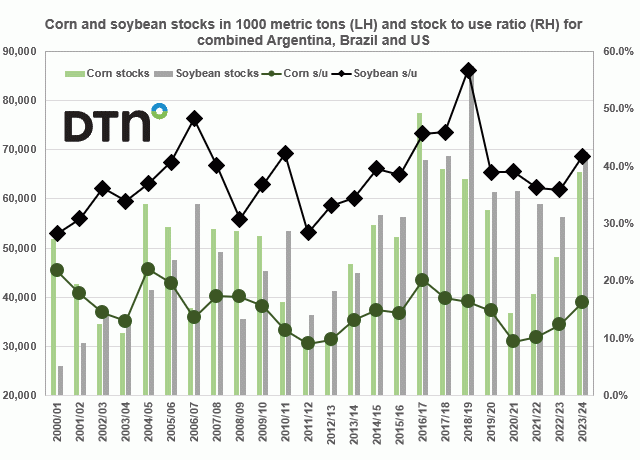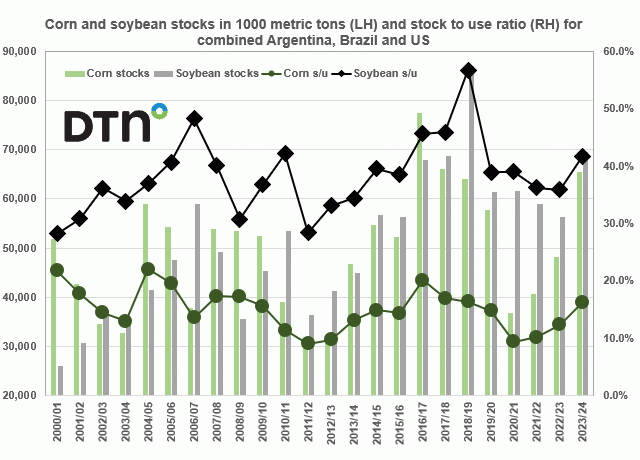Fundamentally Speaking
History of USDA Soybean Yield Revisions
Similar to what we did with corn, this graphic shows the USDA September soybean estimate in bushels per acre (bpa) on the left hand axis vs. the bpa change from the August to the September report and then from that September figure to the final USDA report given in January.
An asterisk by the year means the USDA September projection is a record, such as the case this year where the forecasted 51.9 bpa yield would still match the old high seen in 2016.
The drop in yield of 1.4 bpa was actually less than the trade guess of a 1.5 bpa decline, yet still matches 2013 as the second largest decline in the national soybean yield from the August to the September report since 1983.
P[L1] D[0x0] M[300x250] OOP[F] ADUNIT[] T[]
The biggest drop of 3.0 bpa was in 2003 when the U.S. soybean crop was hit hard by rust.
Interestingly the final 2013 yield increased by 2.8 bpa to finish at 44.0 bpa matching the previous peak set in 2009.
Note that U.S. soybean conditions the week ending 9/15/2013 showed just 50% of the crop either in good or excellent shape vs. 63% today for the same time of the season.
Since 1980 the USDA yield forecast has fallen an average of 0.1 bpa from the August to the September crop production report but then advanced by an average one-half bushel per acre into the final report.
For those 9 years since 1980 where the USDA in its September report pegged the national yield record high the yield forecast has increased by an average of 0.7 bpa from the August to the September crop production report and then advanced by another 0.8 bpa into the final report.
This year the situation is complicated by uncertainty as to how much benefit rains late in August and early September may have been to the plants, particularly in the Eastern Corn Belt where crops were behind, and how much damage was inflicted on the oilseed crops in areas of Minnesota and the Dakotas from a September 8-9th freeze event.
© (c) Copyright 2020 DTN, LLC. All rights reserved.






Comments
To comment, please Log In or Join our Community .